This story is all from memory of course but the detail on North Chailey Common (East Sussex) is correct as I lost my steel helmet in the blast and then met my wife 66 years ago when she came to view the craters. I was also present at Lancing (Nr Worthing) and I was guilty of diving behind the light to avoid the canon shells in case they had my name on them. I eventually was transferred into the R.E.M.E. and spent the rest of the war repairing and maintaining Radar (PF3) on gun sites here and across the Channel.
Pre World war 2. A searchlight detachment consisted of 10 men and the equipment was carried by a Tilling Stevens Petrol Electric lorry, which supplied the 250 volts when on site. The searchlight was a 90cm fitted with four small caterpillar tracks and unloaded by hand with block and tackle, using two metal girders as ramps. When in use on site this was fitted with a "Longarm" to move in bearing and a "Steering Wheel" to control elevation.
Three men worked on the sound locator which was mounted on a metal tripod fitted with a spirit level and bearing and elevation scales. It had four "trumpets" made of plywood and these were connected in pairs (two for bearing and two for elevation) to headsets worn by the two operators. The inter-connection was by flexible tubing of equal length. Operators had to have good hearing and were trained to hear the sound of an aircraft in the centre of their heads when on target. The third operator was connected by telephone to the searchlight operator and gave continuous readings of bearing and elevation. Various modifications and redesign took place eventually introducing microphones into the "trumpets" and the operators using headphones via an amplification circuit.
By July 1940, Radar was introduced in an experimental basis giving bearing only from a large trailer fitted with huge "wings" on which the aerials were mounted (GLMk1). This information was passed to keep the sound locator "on target" while searching for the elevation, both sets of information being passed to the searchlight operator. This must have been quite successful as a German bomber carried out a raid dropping three bombs around the site on North Chailey Common on the 25/26th August 1940. Another site at Lancing has six lights in a large circle. One was used as a "Master" using Radar information and the other five followed it. This site was machine gunned as the illuminated area must have been large and difficult to escape from leaving attacking bombers open to attack by night fighters.
By Stanley Bentall © 2006
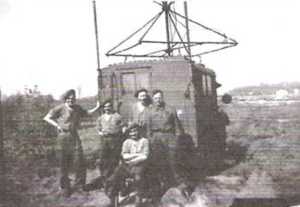
1 - Early warning equipment as described earlier
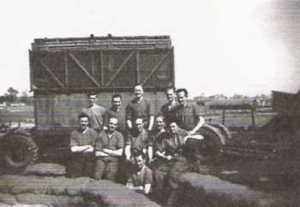
2 - Gun Laying Receiver (GL2) and crew
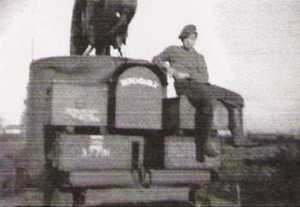
3 - Me posing on the new GL3 using the magnetron. With 2 crafstmen we maintained the equipment.
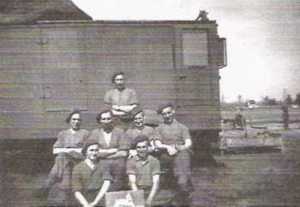
4 - The GL3 again with the operating crew.
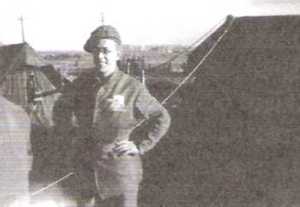
5 - Sgt. Les Keith who was in charge of the Radar operating crew. Does anyone know what happened to him?
